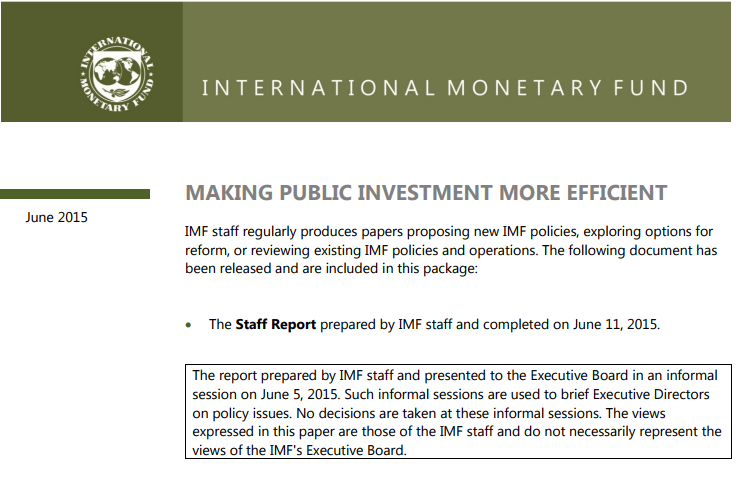Publications
Filter by
337 results found
The present study Review of success stories in urban water utility reform was commissioned in 2015 as a follow-up to an independent evaluation of SECO s Corporate Development activities.

In 2015, SECO undertook a Review of Success Stories in Urban Water Utility Reform. Key tables and diagrams from the Review are presented in this document – forming a tool for analysis and dialogue.

In 2015, SECO undertook a Review of Success Stories in Urban Water Utility Reform. Key tables and diagrams from the Review are presented in this document forming a tool for analysis and dialogue.


This publication examines the direct and indirect benefits of public investment if carried out in a clean and efficient manner. It provides a Framework for Integrity in Public Investment, mapping out risks of corruption at each phase of the investment cycle. It also identifies tools and mechanisms to promote integrity in the public investment cycle and provides examples of their successful implementation in both the public and private sectors.


PFRAM is a tool that assesses potential fiscal costs and risks arising from PPP projects.
This paper assists project teams in managing climate change risk in the context of water supply and sanitation investment projects.


The study was initiated in the backdrop of significant near term challenges to Capital project and infrastructure (CP&I) spending.


The MDBs Joint Declaration of Aspirations on Actions to Support Infrastructure Investment is a tool developed to ensure that MDBs work together to scale up infrastructure investment and attract private sector investment.

This brief outlines some of the issues surrounding permitting and licencing regimes for renewable energy projects and why they are important

The purpose of this study is to provide an overview of the main elements that should be taken into consideration when evaluating the potential for specific projects, it is important to give some indication of potential cost (capital and operating) of an LNG chain.

In September 2015, the General Assembly adopted the 2030 Agenda for Sustainable Development which includes 17 Sustainable Development Goals (SDGs) and emphasizes on a holistic approach to achieve sustainable development for all.

The paper “Partnering to Build a Better World: MDBs’ Common Approaches to Supporting Infrastructure Development” presents a brief description of how MDBs work with their Borrowing Member Countries (BMCs) .

This note seeks to identify a research agenda for addressing the main gaps in information for understanding the drivers and impediments of long-term investment and related financing.

The Decision Tree Framework is a robust decision scaling approach from the World Bank that provides resource-limited project planners and program managers with a cost-effective and effort-efficient, scientifically defensible, repeatable, and clear method for demonstrating the robustness of a project to climate change.

This paper studies the joint decision to invest in such infrastructure, and retrofit it later, given that future climate damages are uncertain and follow a geometric Brownian motion process with positive drift.


This paper finds that better Public Investment Management enhances public infrastructure quality and economic growth, and pinpoints key institutional reforms needs to boost public investment efficiency and productivity.


This report outlines the guidance and recommendations concerning the reform proposals of state owned enterprises operating in the field of water supply and urban sanitation as well as providing guidance/recommendations concerning economic management options for service providers in Vietnam.

The Decision Tree Framework is a robust decision scaling approach from the World Bank that provides resource-limited project planners and program managers with a cost-effective and effort-efficient, scientifically defensible, repeatable, and clear method for demonstrating the robustness of a project to climate change.

This guide outlines five steps in the context of achieving a knowledge exchange, (i) Anchor the knowledge exchange, (ii) Define the knowledge exchange, (iii) Design and develop the knowledge exchange, (iv) Implement the knowledge exchange, (v) report the results. Case studies from South America and Africa are discussed with reference to this guide. This is the second edition of the document updated in 2015.

This guide outlines five steps in the context of achieving a knowledge exchange, (i) Anchor the knowledge exchange, (ii) Define the knowledge exchange, (iii) Design and develop the knowledge exchange, (iv) Implement the knowledge exchange, (v) report the results. Case studies from South America and Africa are discussed with reference to this guide. This is the second edition of the document updated in 2015.



